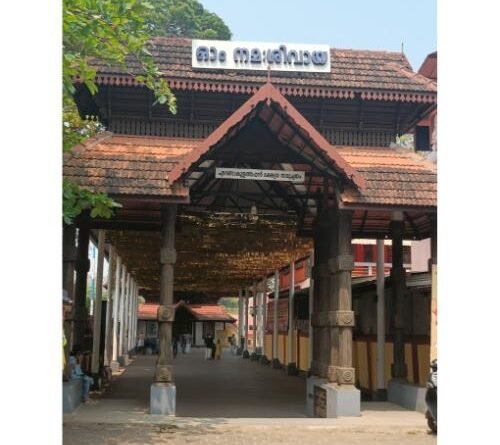Ernakulam Shiva Temple Ernakulam,Kerala
Ernakulam Shiva Temple, also known as Ernakulathappan Temple, is one of the major temples of Kerala, located in heart of Ernakulam, Kochi,Kerala, India. The temple, dedicated to Lord Shiva, is considered as the city temple, with the presiding deity as the protector of the city, as per local Hindu faiths and traditions. As per the common practice in Kerala, the deity is reverently called Ernakulathappan, which means Lord of Ernakulam. The temple is located within the Durbar Hall Ground. The temple history itself has deep association with history of the city and was one of the 7 royal temples of Kochi Maharajas. The temple is now under administration of Cochin Devaswam Board. The temple in its current form was built under active patronage of Diwan Sri Edakkunni Sankara Warrier in year 1846 and raised it level of a Royal temple in the Kochi Kingdom. The temple is built on 1-acre (4,000 m2) land. The temple is one of the major Shiva temples in Kerala counted along with the Ettumanoor Mahadevar Temple, Kaduthruthy Mahadeva Temple, Vaikom Temple, Chengannur Mahadeva Temple, Vadakkunathan temple, and Sreekanteswaram Mahadeva Temple, Thiruvananthapuram.
History
The existence of temple was first mentioned in Sangam Literature as one of the major temples under Chera Dynasty. Cheras were adherent worshipers of Lord Shiva. When Chera dynasty ended, the place fell into the hands a few Nair nobles who renamed the place as Ernakulam (corrupt form of original word- Eere Naal Kulam meaning Pond with water always) in recognition of the famous sacred pond of this temple. Soon this area came under reign of Kochi Kingdom. The Kochi Rulers, due to the siege of Fort Kochi by the Dutch in the 17th century, moved their capital to Ernakulam and established a Palace close to this temple, facing the temple pond (The Tank Shed Palace seen behind current Durbar Hall). This helped the temple to gain prominence, due to royal patronage. The temple deity was declared as protector of Ernakulam city (Nagara Devata),
The second phase of the temple came in 1842 when Diwan of Kochi, Sri Edakkunni Sankara Warrier felt to renovate the temple which were in dilapidated condition. Works were started in 1843. Two new Gopura Mandapams (Entrance Towers) were constructed in traditional Kerala style similar to Sree Poornathrayesa Temple of Tripunithura which was the Chief Royal temple of Kochi Maharajas. The new temple complex was opened to public in 1846. The temple was elevated to a royal temple and brought under direct administration of Kochi Government’s Devaswom Board. In 1949, when Kochi acceded into India Union, the Devaswom Board came under new Government’s control, which still remains.
















